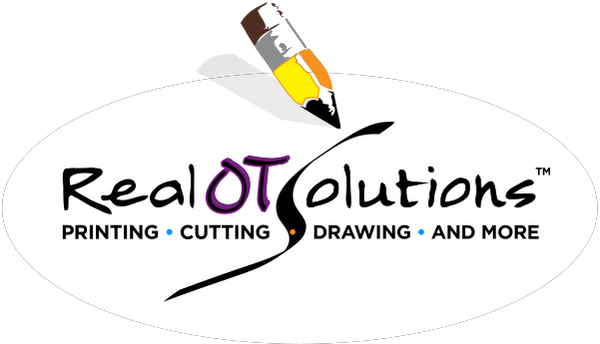Key Takeaways
- There are many crucial developmental milestones for young children, including fine motor skills like cutting, drawing, and writing.
- The development of fine motor skills usually occurs in tandem with physical development and cognitive growth, like problem-solving, creativity, and other life skills.
- Learn why scissor skill development in preschool is so important for children and how you can help them practice these types of movements with age-appropriate activities.
Scissor Skills for Preschoolers
Whether you’re a parent, teacher, or occupational therapist, you’ve probably seen a list of milestones that can help you determine how your child is developing. On this list, fine motor skills are among the most important, as they’re related to a variety of life skills, including getting dressed and practicing hygiene. Eventually, they lead to more advanced skills, such as cooking, driving, and playing sports.
Scissor skill development is one of several exercises that can help children practice their fine motor skills for the future. You can also use a scissor skill development program to track their progress, introduce kids to engaging learning activities, and help them explore a variety of experiences that develop their creativity. Learn more about why scissor skills for preschoolers matter from the experts at Real OT Solutions®!
Why Scissor Skill Development Matters
While cutting up paper with scissors may seem like a simple activity, it’s actually so much more important than you think! Here are a few reasons why you should introduce scissor skill development, along with handwriting practice, tracing practice, and other open-ended learning exercises:
- Hand-Eye Coordination: Distinct from fine motor skills, hand-eye coordination focuses on the connection between vision and movement. When a child cuts along a line or tries to create a specific shape, they’re using their visual skills to determine their hand movements.
- Fine Motor Skill Development: Fine motor skills are all about developing those small hand muscles that control delicate movements. Children need these muscles for everything from tying their shoes and buttoning clothes to writing clearly. As adults, you use fine motor skills for chopping up food, folding clothes, or participating in crafts.
- Spatial Awareness: An extension of hand-eye coordination, spatial awareness helps children move more safely through the world. Once they gain an understanding of spatial relationships, they begin unconsciously incorporating these skills into larger movements. They’ll be safer as they run and play out in the world when they start learning these skills early.
- Bilateral Coordination: When engaging in scissor cutting exercises for preschoolers, children have to use both hands to get the desired effect. They practice using both sides of their bodies at the same time, a useful skill for more advanced life requirements, like driving a car, riding a bike, or typing on a keyboard.
- Creativity: When not using a defined practice sheet, scissor skill development allows children to experiment with different shapes and patterns. Letting their brains run wild encourages creativity. Using their brains creatively here is a stepping stone to problem-solving in the real world.
- Cognitive Growth: Whether you start with defined practice cutting sheets or open-ended experiments, cutting things up challenges preschoolers to plan their approach and make decisions about specific tasks — essential skills for cognitive growth. They also learn about the consequences of their actions, ensuring they take time to think before acting.
So how can you practice scissor skills with preschoolers? Check out our list of scissor skill development activities to intersperse within your handwriting curriculum, reading practice, and other learning essentials.
How to Help Develop Scissor Skills

You can conduct a variety of scissor skill development activities at home or in the classroom. Here are a few favorites from the Real OT Solutions® team:
1. Cutting Straight Lines: Provide your child with lined paper and encourage them to cut just along the lines. You can draw the lines yourself or use handwriting practice workbooks with bold lines on each page.
2. Practicing Curved Shapes: Move on to simple shapes, including circles and squares. You can encourage them to draw their own shapes on blank paper. Then, they can cut out those shapes for dual practice.
3. Exploring Complex Silhouettes: Triangles, diamonds, and hexagons are where it starts to get complicated. Once your child has mastered the simpler patterns, they can start exploring irregular shapes.
4. Working With Patterns: Advanced scissor practice paper can come with a variety of line patterns that indicate different cutting techniques. These templates can help preschoolers with precision and planning.
5. Crafting Time: Scissor skill development doesn’t have to happen alone! Integrate scissor practice into more complex crafts, like collages, paper puppets, snowflakes, and greeting cards.
6. Game Activities: Make scissor practice into a game. One of our favorites is providing kids with a template for a puzzle. They need to cut out all the pieces and assemble the puzzle to create a final image!
Each of these recommendations is listed in order of increasing difficulty. Assess your child’s skill level by having them practice cutting in a straight line before progressing to the more complicated options. We recommend using these lessons with safety scissors under the supervision of a parent, therapist, or teacher.
Mastering Scissor Skill Development
Now that you know more about the importance of scissor skills for preschoolers, you can integrate appropriate activities into school lessons, home practice, and therapy sessions. Make teaching handwriting, cutting, reading, and drawing simple with pre-made activities from the experts at Real OT Solutions®.
And if you’re looking for more ways to enhance your own education, consider joining our OT courses online, checking out our homeschool handwriting program for parents, or participating in our self-study handwriting webinar!


